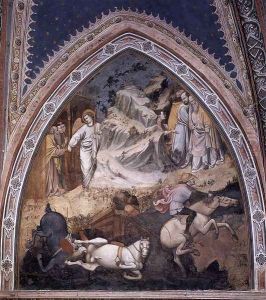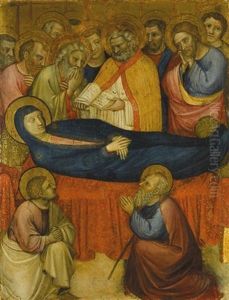Jacopo Avanzi Paintings
Jacopo Avanzi was an Italian painter of the early Renaissance, active mainly in Bologna and Padua. Born around 1370, he was a contemporary of other renowned artists such as Altichiero da Zevio and Jacopo da Verona. Avanzi's career took place during a period of significant transition in art, where the Gothic style was giving way to the emerging Renaissance aesthetic, characterized by a greater attention to perspective, human anatomy, and the naturalism of figures.
Avanzi's work is not as well documented as that of some of his peers, and thus less is known about his personal life. However, his artistic contributions are noted for their vibrant colors and expressive figures. One of his most famous works is the decoration of the Chapel of St. George in the church of Sant'Antonio in Padua, which he undertook alongside Altichiero da Zevio. The frescoes in this chapel are considered some of the finest examples of the International Gothic style in Italy.
Despite the lack of extensive records on Avanzi's life and works, his contribution to the development of early Renaissance art in the Veneto and Emilia-Romagna regions is evident. His style bridges the late Medieval approach with the more advanced techniques that were being developed in the early 15th century. Unfortunately, much of Avanzi's work has not survived or has been attributed to other artists due to the scant documentation and the common practice of workshop collaboration at the time.
Jacopo Avanzi is believed to have died around 1416. While his name might not be as recognizable as some of his contemporaries, he remains an important figure for students and historians of early Italian Renaissance art, as his paintings reflect the stylistic shifts and the rich cultural environment of Italy during that period.

